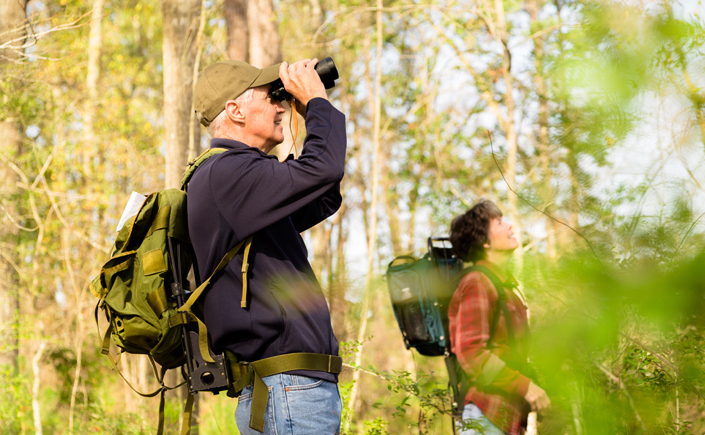
As a physicist and astronomer, Lucy Fortson, Ph.D., never imagined she would find herself involved in a study to analyze half a million ancient Greek writing fragments found on Egyptian papyri. Helping orchestrate an effort to code over a million pictures documenting animal behavior in Tanzania’s Serengeti National Park wasn’t high among her expectations, either.
But now, delving into such wide-ranging projects is business-as-usual for Fortson, associate head of the University of Minnesota’s School of Physics and Astronomy. In her other role as the head of Zooniverse@UMN, the U’s citizen science initiative, Fortson helps researchers in fields ranging from anthropology to zoology connect their studies to volunteers who can contribute to data collection or analysis. So far, the Zooniverse project has led to over 100 peer-reviewed research articles.
At the U and beyond, citizen science continues to evolve to fit the new tools available to it, calling upon volunteers from across the world. NASA’s CosmoQuest project, for example, provides volunteers with a way to investigate high-resolution images taken by spacecraft for signs of impact craters on the surfaces of Mars, Mercury and the moon. Closer to home, there are projects like that of the Minnesota Department of Natural Resources, which has been rallying residents for 20 years to help monitor the population of loons across the state.
Recent changes in citizen science have been spurred in part by a dramatic increase in the amount of data that scientists are generating. Where citizen scientists once only collected data and recorded observations, they now also play a role in making sense out of the mountain of information collected through newer technologies like cell phones, drones, telescopes and satellites.
“We live today in a world that is just flooded with data,” Fortson said. “It’s difficult for even computers to keep up. Humans, however, have this excellent ability to recognize patterns, making them better than computers at certain forms of analysis.”
Emerging trends in citizen science were central to the latest Convergence Colloquia event, which brought together experts from local government, nonprofit organizations, environmental groups and the University of Minnesota earlier this month to discover opportunities for new partnerships and programs that can take advantage of this research technique.
Colloquium participants discussed how to create more effective citizen science-based studies, including how best to convey the goal of the project, train participants and provide reports that keep participants invested in the project’s progress.
Participants also discussed the way citizen science impacts its participants, including what motivates people to volunteer their time for such studies, as most of the current projects rely on altruism — the good feeling people get from helping others.
“Citizen science is a unique research method that not only fuels scientific discovery but expands the public’s understanding of — and appreciation for and engagement with — science,” said Carissa Slotterback, Ph.D., director of Research Engagement and convener of the Convergence Colloquia events. “This event allowed participants to explore new techniques for generating, analyzing and sharing data through citizen science and engaging the public across age demographics and regions.”
As new approaches and tools make citizen science a promising tool for analyzing data in an expanding number of fields, interest has been high among U researchers, especially those in agriculture, astronomy, biology, ecology and the humanities.
Tracking the Changing Habitats of Flora and Fauna
One new U-based project will use a collection of 750,000 wildlife, plant and fungi specimens from the Mississippi River headwaters, curated by the U’s Bell Museum over the past 125 years, for the Mapping Change in the Heartland project.
Led by George Weiblen, Ph.D., professor of plant biology and Keith Barker, Ph.D., associate professor of ecology, evolution and behavior in the College of Biological Sciences, the project will recruit citizen scientists to log information on these specimens, many of which were collected before extensive development and alteration of the land, into a digital system.
Capturing the information digitally will allow researchers to better understand where plants and animals have been and predict how a changing climate may affect them going in the future.